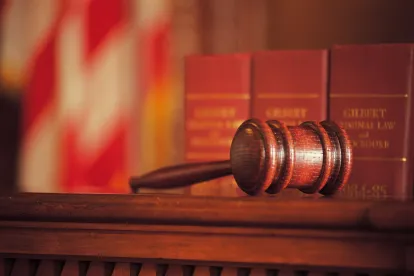The Fair Debt Collection Practices Act (“FDCPA”) is a significant piece of legislation. It has regulated “debt collectors,” as defined by statute, for over 40 years. Recently, the Consumer Financial Protection Bureau issued a new rule implementing the statute’s enforcement (for CPW’s prior coverage, check out here and here). Despite these significant developments, however, a recent opinion reminds us of one significant shortcoming concerning the FDCPA: the Supreme Court has never addressed standing under the statute. In the absence of precedent from the nation’s highest court, this recent opinion highlights a common standing analysis performed by courts faced with standing issues under FDCPA claims. Read on to learn more.
In Salermo v. Watters, No. 19-cv-02791, 2021 U.S. Dist. LEXIS 16169 (S.D. Tex. Jan. 28, 2021), the court granted in part and denied in part a motion to dismiss several FDCPA claims. The plaintiff received a loan from a credit union that she intended to use to repay credit card debt. The defendant, a law firm allegedly retained by the credit union to collect on the loan, sent the plaintiff a signed debt collection letter (the “Letter”) on its letterhead. The defendant’s signature and its letterhead were at the heart of the plaintiff’s two main arguments.
First, the plaintiff argued that the letterhead and signature violated the FDCPA because it implied that an attorney had reviewed her case and drafted the letter. The plaintiff argued that this violated the FDCPA’s restriction on debt collectors from using “any false, deceptive, or misleading representation”. This included falsely representing any communication is from an attorney or using “false representation or deceptive means” to collect or attempt to collect a debt. The plaintiff alleged the letterhead and signature caused her to become “upset and frightened” because they implied that an attorney had reviewed her case and drafted the letter.
Second, the plaintiff also argued that the Letter deceived her concerning the validity of her debt. The Letter stated that the debt “will be presumed to be valid” if the plaintiff failed to dispute it within a period of time. In reference to who or what would consider the debt to be “valid,” the plaintiff alleged that the Letter deliberately omitted the words “by the debt collector”. This omission caused her to believe that her failure to dispute the debt would confirm the debt’s validity to parties besides the debt collector, e.g., creditors, courts, etc. The plaintiff repeated her arguments that this violated the FDCPA’s restrictions on “false, deceptive, or misleading representation” and using “false representation or deceptive means”. The plaintiff also introduced a new argument that the omission violated the FDCPA’s requirement that a debt collector notify a consumer that a failure to dispute a debt will cause the debt to be assumed valid by the debt collector.
Salermo is a good exercise in standing under FDCPA claims. The court reminded us that the Supreme Court has not addressed standing under the FDCPA. In the absence of precedent from the nation’s highest court, the court applied the Supreme Court’s decision in Spokeo Inc v Robins, 136 S. Ct. 1540 (2016), where standing under the Fair Credit Reporting Act (“FCRA”) was evaluated. The Salermo court noted that in Spokeo, alleging a statutory violation was not sufficient under the FCRA. Article III standing was also required. Applying Spokeo to the case before it, the court determined that the plaintiff had standing for its false representation claims, but found the plaintiff lacked standing for its validity of debt argument.
For the first argument, the court found the plaintiff’s allegations showed that an “unsophisticated consumer reading the [L]etter . . . could reasonably conclude that an attorney prepared and sent it”. In other words, the court stated, receiving a communication like the Letter “by its nature increases fear and apprehension that a lawsuit is imminent (or that litigation will be involved) when it perhaps might not be.” Accordingly, “that same fear will exist even in situations where the consumer knows that the debt is valid.”
On the second argument, the court stated the plaintiff did not plead that the debt was not valid and noted that the plaintiff’s counsel conceded the debt’s validity. The court stated that the FDCPA does not “accord a consumer the right to have others assume that a debt isn’t valid when in fact it is.”
The court also highlighted the defendant’s failure to contest the plaintiff’s pleading for its attorney involvement claim. The court noted the defendant’s failure was “curious because the complaint appears quite unsupported in this regard”. The court focused specifically on the plaintiff’s use of “upon information and belief”. The court observed while “pleading upon information and belief is permissible in a general sense,” this was not a license to turn an otherwise insufficiently pleaded allegation into an allegation recognizing. The court stated that such allegations must still be supported by “related information or facts” that will “establish that belief.” The court further compared the plaintiff’s “upon information and belief” allegation with the “typical phrasing” that “[p]laintiff is informed and believes and upon such information and belief alleges”.
So there you have it-Salermo is a reminder of how interconnected FDCPA and FCRA analyses can become. For more developments in the area of FDCPA and FCRA litigation stay tuned. CPW will be there.




 />i
/>i

